Yung Stiffler, Dr. Kendall House
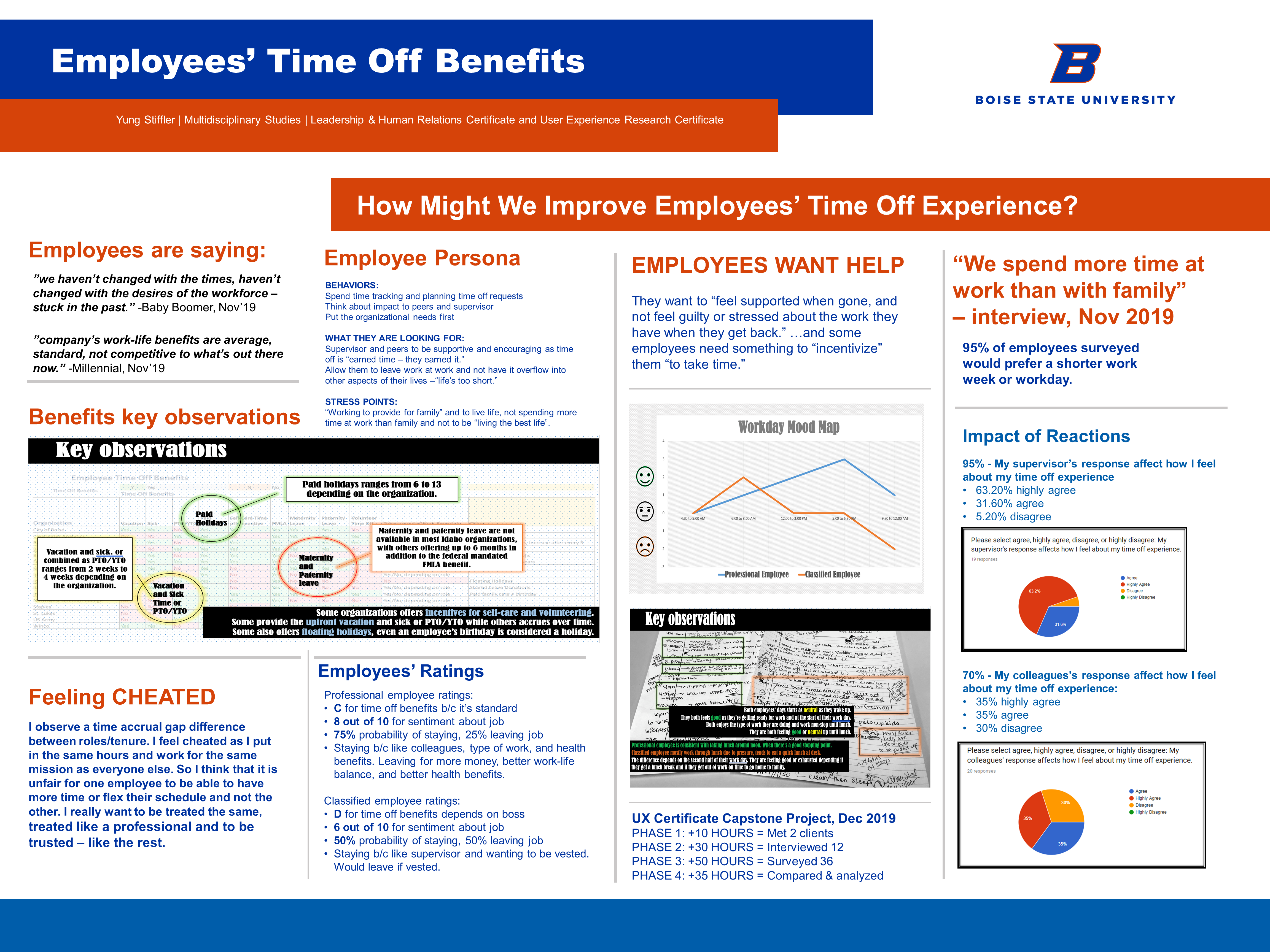
Employees are saying:
”We haven’t changed with the times, haven’t changed with the desires of the workforce – stuck in the past.” -Baby Boomer, Nov’19
”Company’s work-life benefits are average, standard, not competitive to what’s out there now.” -Millennial, Nov’19
Benefits Key Observations

Some organizations offers incentives for self-care and volunteering. Some provide the upfront vacation and sick or PTO/YTO while others accrues over time. Some also offers floating holidays, even an employee’s birthday is considered a holiday.
Vacation and Sick time or PTO/YTO
Vacation and sick or combined as PTO/YTO ranges from 2 weeks to 4 weeks depending on the organization
Paid Holidays
Paid Holidays ranges from 6-13 depending on the organization
Maternity and Paternity Leave
Maternity and paternity leave are not available in most Idaho organizations, with others offering up to 6 months in addition to the federal mandated FMLA benefit.
Feeling Cheated
I observe a time accrual gap difference between roles/tenure. I feel cheated as I put in the same hours and work for the same mission as everyone else. So I think that it is unfair for one employee to be able to have more time or flex their schedule and not the other. I really want to be treated the same, treated like a professional and to be trusted – like the rest.
Employee Persona
Behaviors
- Spend time tracking and planning time off requests
- Think about impact to peers and supervisor
- Put the organizational needs first
What they are looking for
- Supervisor and peers to be supportive and encouraging as time off is “earned time – they earned it.”
- Allow them to leave work at work and not have it overflow into other aspects of their lives –“life’s too short.”
Stress Points
“Working to provide for family” and to live life, not spending more time at work than family and not to be “living the best life”.
Employees’ Ratings
Professional employee ratings:
- C for time off benefits b/c it’s standard
- 8 out of 10 for sentiment about job
- 75% probability of staying, 25% leaving job Staying b/c like colleagues, type of work, and health benefits. Leaving for more money, better work-life balance, and better health benefits.
Classified employee ratings:
- D for time off benefits depends on boss
- 6 out of 10 for sentiment about job
- 50% probability of staying, 50% leaving job Staying b/c like supervisor and wanting to be vested. Would leave if vested.
Employees want help
They want to “feel supported when gone, and not feel guilty or stressed about the work they have when they get back.” …and some employees need something to “incentivize” them “to take time.”
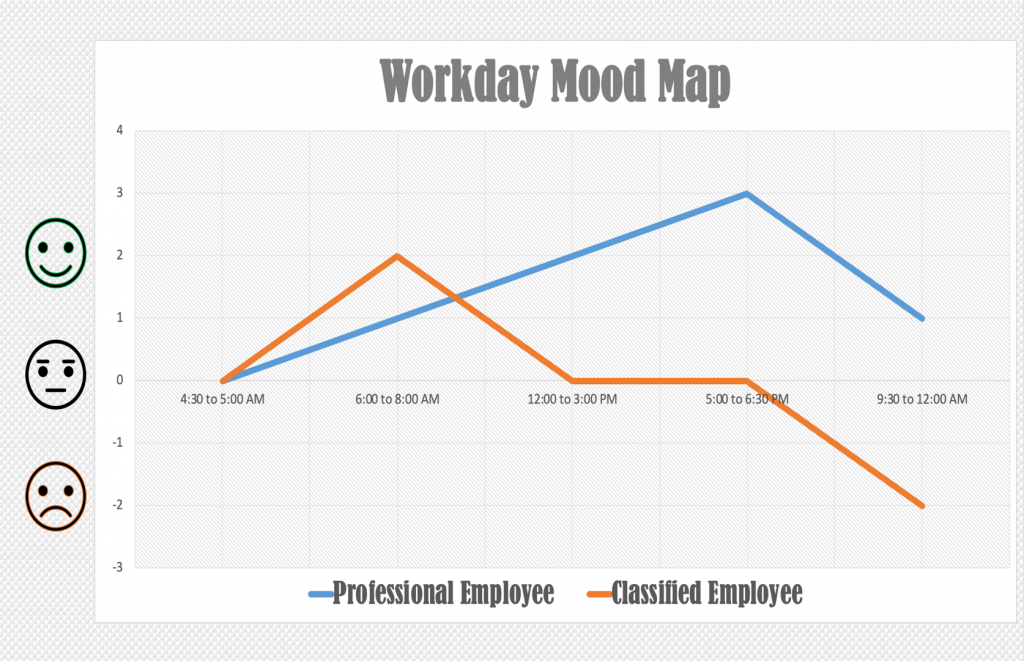
Key Observations
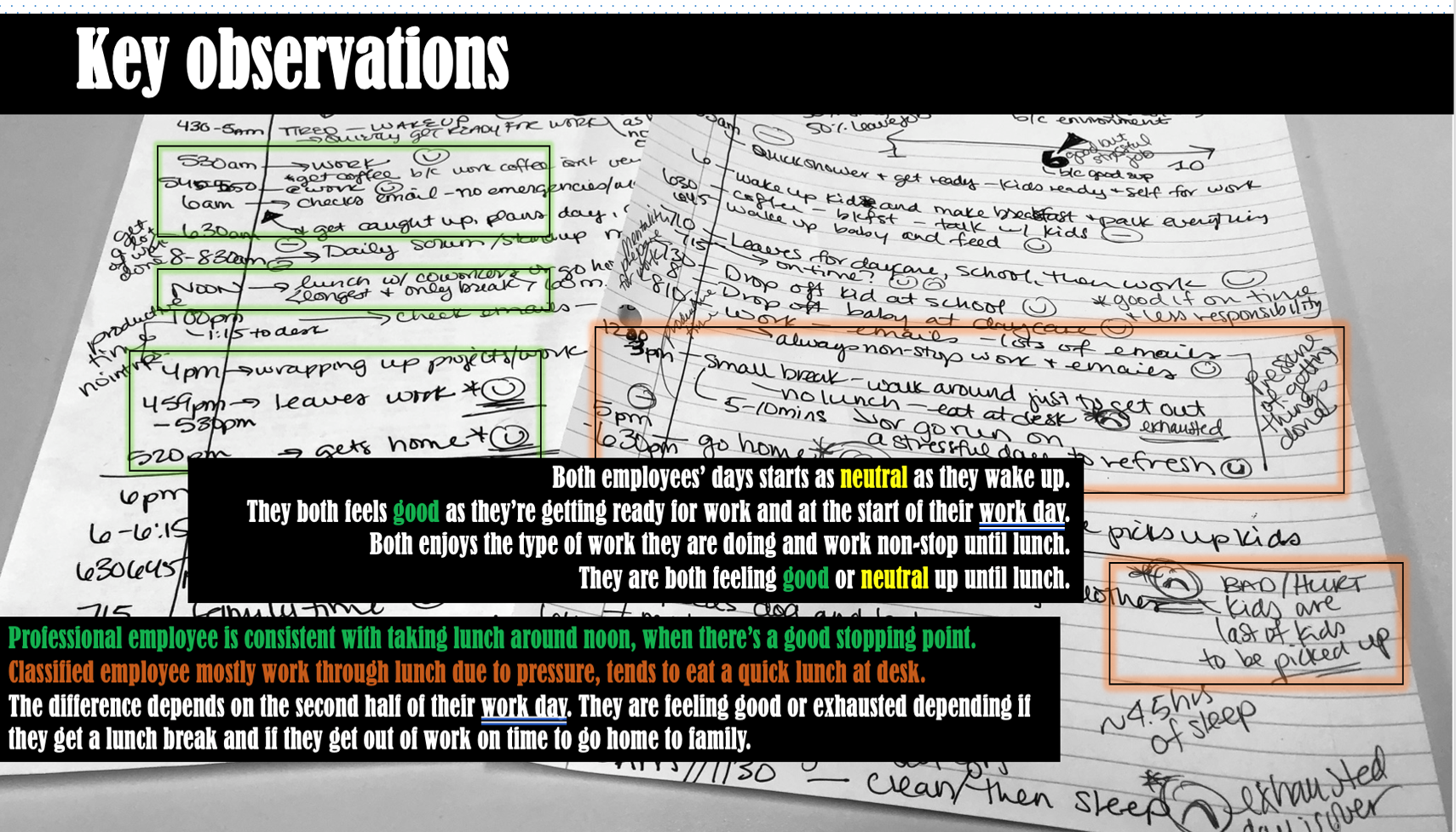
Both employees’s days start as neutral as they wake up. They both feels good as they’re getting ready for work and at the start of their work day. Both enjoys the type of work they are doing and work non-stop until lunch. They are both feeling good or neutral up until lunch.
Professional employee is consistent with taking lunch around noon, when there’s a good stopping point. Classified employee mostly work through lunch due to pressure, tends to eat a quick lunch at desk. The difference depends on the second half of their work day. They are feeling good or exhausted depending on if they get a lunch break and if they get out of work on time to go home to family.
“We spend more time at work than with family” – interview, Nov 2019
95% of employees surveyed would prefer a shorter work week or workday.
Impact of Reactions
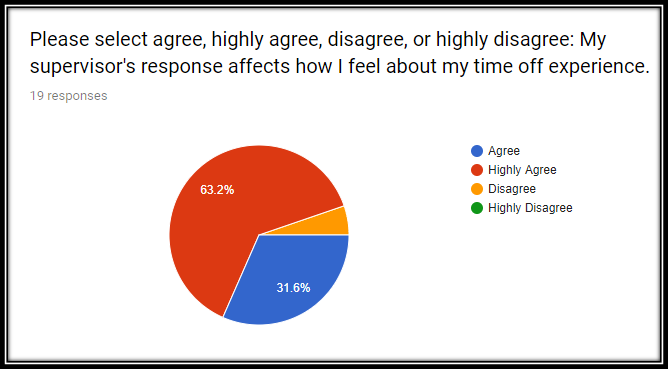
95% – My supervisor’s response affect how I feel about my time off experience
- 63.20% highly agree
- 31.60% agree
- 5.20% disagree
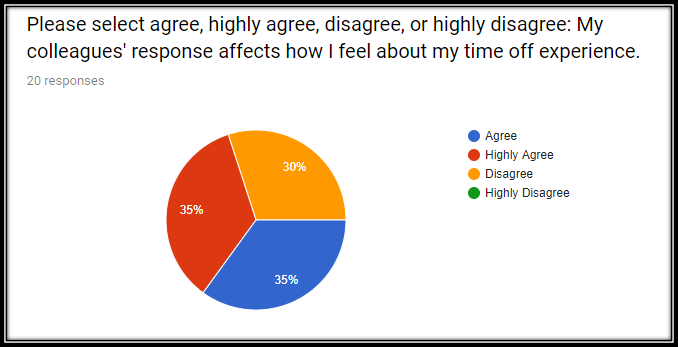
70% – My colleagues’s response affect how I feel about my time off experience:
- 35% highly agree
- 35% agree
- 30% disagree
UX Certificate Capstone Project, Dec 2019
- PHASE 1: +10 HOURS = Met 2 clients
- PHASE 2: +30 HOURS = Interviewed 12
- PHASE 3: +50 HOURS = Surveyed 36
- PHASE 4: +35 HOURS = Compared & analyzed
Additional Information
For questions or comments about this research, contact Yung Stiffler at thuydungstiffler@boisestate.edu.